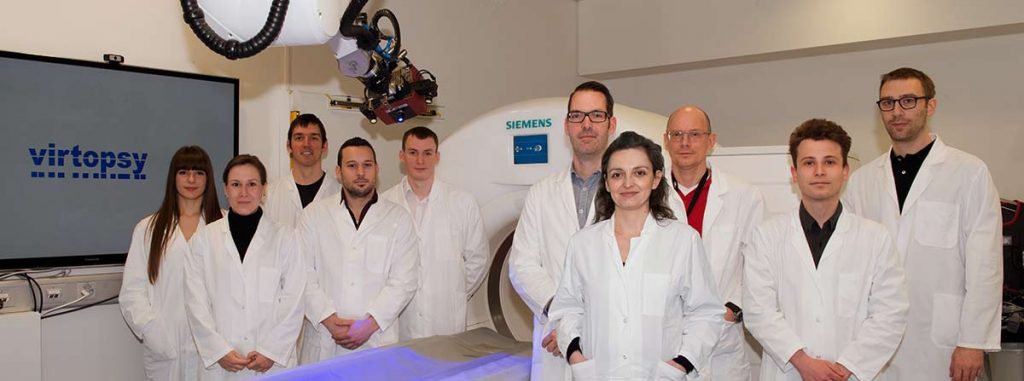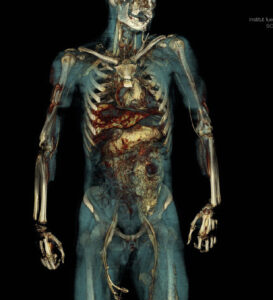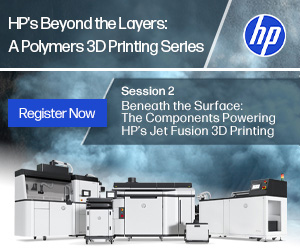Criminal investigations, unusual deaths, victims of disasters and hospital quality controls rely heavily on autopsies. In the field of forensic medicine, the body is crucial evidence and can provide leads to determine the cause of death. However, forensic medicine costs tend to run high, which is why for a few years a group of experts at the University of Zurich, in Switzerland, has been developing automated tools to perform forensic pathology on corpses.
 One of the team’s most interesting developments in a series of innovations is a very affordable postmortem computed tomography angiography, or PMCTA kit. By combining 3D printing with parts found at any local hardware store, the group of experts has been able to assemble a PMCTA kit for $120. And the best part is that anyone can find the printable 3D models as STL files, and the hardware store-obtained parts, with their detailed specifications online at virtopsy.com.
One of the team’s most interesting developments in a series of innovations is a very affordable postmortem computed tomography angiography, or PMCTA kit. By combining 3D printing with parts found at any local hardware store, the group of experts has been able to assemble a PMCTA kit for $120. And the best part is that anyone can find the printable 3D models as STL files, and the hardware store-obtained parts, with their detailed specifications online at virtopsy.com.
The PMCTA is a useful complement to an actual autopsy, as it helps to increase the quality of post-mortem diagnosis. And while modern imaging techniques like CTs and MRIs are often used in forensic pathology, the PMCTA technique addresses other issues, like soft-tissue contrast and poor visualization of the vascular system, so that by using contrast agents in the body, examiners can identify certain possible or potential leaks. According to a paper entitled “Very economical immersion pump feasibility for postmortem CT angiography,” published by Wolf Schweitzer, Patricia Mildred Flach, Michael Thali, Patrick Laberke and Dominic Gascho from the university’s Department of Forensic Medicine and Imaging, PMCTA, in general, has become known to help solve particularly tricky forensic pathology cases, even in decomposed bodies.
Michael Thali, chair of the Institute of Forensic Medicine at the University of Zurich, said that tools like PMCTA “are opening a whole new world of forensics, one that could accelerate the field” and that by “using techniques such as MRI, CT, biopsy, and angiography, we can see 60 percent to 80 percent of the forensic causes of death.”
Today, the PMCTA has become increasingly popular both for research and case investigation. However, the current leading commercial solution for post-mortem angiography is a machine that costs over $80,000, while a single postmortem scanner adds another $500 to the already pricey bill. Specialists at the University of Zurich suggest that such costs are prohibitively high for many forensic pathologists. This is one of the reasons they came up with the idea of a low-cost PMCTA, accessible to any forensic lab around the world.

Production of Very Affordable PMCTA-kits. Left: 3D printing in progress; Middle: finished print batches; Right: kits in process of being packed
The team used hardware store supplies and 3D printing to develop a post mortem CT angiography kit that anyone could create and use for just $120, and they even uploaded instructions online, instead of patenting the device. Parts of the PMCTA kit require a dedicated specific design and build. On the design level, the team originally used a hybrid parametric and direct modeling approach then transferred the design to an STL-formated file for easy use across different software platforms. They used 3D printing to create femoral catheters, a cylindrical push compression fitting, a bucket tube fixture, and vascular tourniquet set.
The PMCTA kit is part of the Virtopsy project, developed by forensic scientists at the University of Zurich around the turn of the Millenium as a multi-disciplinary applied research project to implement imaging modalities from diagnostic radiology and surveying technology in forensic sciences. Since then, the Virtopsy approach has become an emerging if not, the standard procedure in forensic investigations worldwide. The term Virtopsy has actually been used in a variety of settings all over the world and uses advanced technologies to aid and evolve forensics. Virtopsy uses computed tomography, magnetic resonance imaging, optical 3D surface scanning, 3D photogrammetry and 3D printing to detect and document forensic evidence in a minimally-invasive and observer-independent manner in both the living and the deceased. It is widely used by investigators in criminal cases and in court.
Specialists were able to create a very affordable and functional kit thanks to 3D printing. The kit easily fits into a small suitcase and is neither large nor heavy. Talk about bringing down costs, this PMCTA kit costs less than 1% of a commercial PMCTA available today on the market. There are already so many challenges associated with forensic medicine, especially in developing nations, where funding for this field is not very forthcoming, combined with a shortage of forensic pathologists and technical specialists–a shocking fact, considering how popular the field became after so many TV shows focused on the behind the scenes tasks of CSI and forensics.
In countries like India, for example, there is not only a shortage of forensic experts, mortuaries lack basic facilities and reference material is out-of-date. Moreover, a single mortuary in Barabanki, staffed with one sanitation worker and a single doctor on duty did 972 autopsies in 2017, and that’s just one example, there are plenty more. Advances in technology are a great way to address some of the basic needs of the field, especially when forensic doctors everywhere can download the information and build the kit themselves.
Let us know your thoughts! Join the discussion of this and other 3D printing topics at 3DPrintBoard.com.
[Images: Virtopsy and University of Zurich]Subscribe to Our Email Newsletter
Stay up-to-date on all the latest news from the 3D printing industry and receive information and offers from third party vendors.
Print Services
Upload your 3D Models and get them printed quickly and efficiently.
You May Also Like
3D Printing News Briefs, May 31, 2025: Project Call, Consortium, Certification, & More
We’re starting with the latest America Makes Project Call in today’s 3D Printing News Briefs, and a consortium to promote the adoption of additive manufacturing has been founded in Spain....
Touch, Motion, Intelligence: How MIT CSAIL Is Reimagining 3D Printing
MIT’s Computer Science and Artificial Intelligence Laboratory (CSAIL) is helping define a new era of 3D printing, one where printed parts can feel like fabric, move like muscles, and carry...
Additive Manufacturing in the Small Arms Silencers Market – Eight Years Later
In 2017, AM Research (then known as SmarTech Publishing) published what probably seemed like an odd research note to the AM industry at the time – an opportunity brief and opinion...
Nikon Advanced Manufacturing & America Makes to Develop Aluminum Powder Dataset
Nikon Advanced Manufacturing Inc. (NAMI), the Long Beach-based end-to-end metal additive manufacturing (AM) firm, has announced that the company is partnering with the Manufacturing USA Institute America Makes to develop...

































